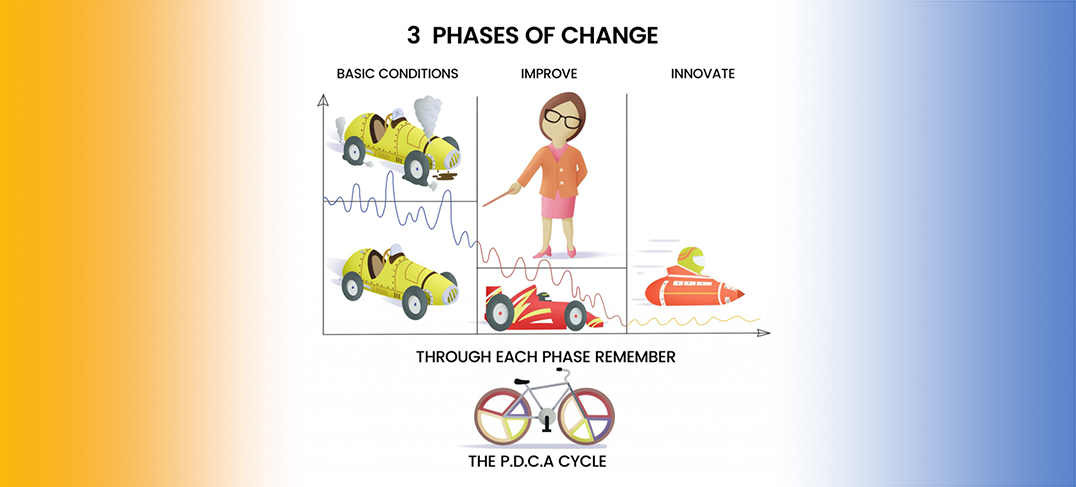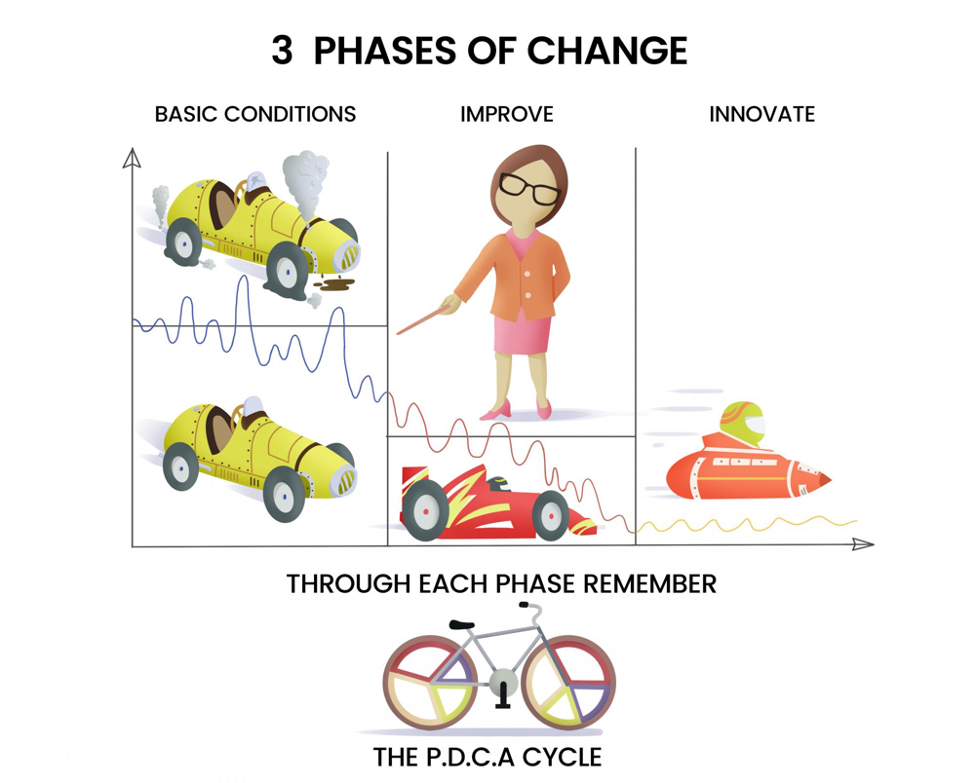Core Tools & PDCA
Table of Content 1. The Core Tools for Operational Excellence 2. PDCA Cycle: Plan-Do-Check-Act the core tool for OpEx ...
Category: Uncategorized
Sign in

Prepare, Manage, and Sustain are not the only 3 phases of change you need to be aware of. In this article, we are describing the actual detailed process of change. Whereas Prepare, Manage, and Sustain are on a higher level. With any improvement project, it is important to follow the three phases of the change model. The three phases of change are Basic Conditions (First Phase), Improve (Second Phase), and Innovate (Third Phase). It is vital that solid foundations are put in place so that any improvements made are sustainable. Following this, more innovative solutions such as new machinery or complete redesigns can be implemented.
Each phase of change contains its own PDCA cycle. This ensures that the gains made at each phase can be held and sustained.

1- Basic Conditions - First Step Of The Three Phases of Change in Process Improvement
The first phase is to return the machine, process, or whatever the subject of change is too basic conditions. Over time, subtle changes are often made which were not in the original design. Proper maintenance may not have taken place meaning machines are not working as they were intended. Processes may not be being operated as per the original training or work instruction.
Resetting these back to basic conditions will often yield up to 50% of the overall improvement potential. Think of a race team trying to improve the performance of their racecar. There is little to be gained from introducing a new aerodynamics package if the engine has not been serviced or there are old, worn tires on the car.
By resetting the basic conditions, anomalies can be clearly identified. This allows the failure modes & losses to be discovered, guiding the improvement team to focus their resources in the most beneficial areas.
2- Improve - Second Step Of The Three Phases of Change in Process Improvement
Once basic conditions have been reset, the team can then target & eradicate the failure modes, reducing the losses & improving the process.
With a stable process now in place, the data gathered from any anomalies can be used to prioritize the improvements which will be most beneficial. Back to our racecar analogy, now that the engine is working to its optimum level & new tires are fitted, improvements in aerodynamics can be trialed. The results of these improvements can be properly assessed, meaning actions can be taken to ensure they are sustained & the loss is permanently reduced.
Following the successful improvement phase, a new primary condition has been established. In turn, this can also be improved upon. It then follows that the process can be iteratively improved upon until there are no more reasonable improvements to make.
3- Innovate - Third Step Of The Three Phases of Change in Process Improvement
After the process has been improved to such a point that all losses have either been removed or reduced to the absolute minimum level possible, more innovative solutions are required. This could be to completely redesign the process, introduce a new machine, or restructure a department.
Let's return to the racecar analogy for a final time. After the current car has been improved so as to be as fast as possible, innovation is required to make the next step. In this case that could be to design an entirely new car with a completely different design philosophy.
So, it follows that this could be the case with a machine or process. The innovation phase should only be used once the first two phases have been completed. In this way, all losses that can be reasonably removed are eradicated before significant financial, time, and people resources are invested to make further improvements.
By using PDCA at each changing phase, all gains can be held leading to sustainable improvements.